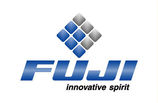Online support HOTLINE: 84-2439437063
|
KEY AREAS IN THE FUNCTIONAL AND INDUSTRIAL PRINT MARKET(16/05/2018)
Globally these have a combined value of $76.9 billion in 2017 and have more than doubled in the past years, up from $37.2 billion in 2012. Exclusive data from the Smithers Pira report The Future of Functional and Industrial Print to 2022 examines nine key segments:
Globally these have a combined value of $76.9 billion in 2017 and have more than doubled in the past years, up from $37.2 billion in 2012. All will continue to grow strongly across the next five years with a mean year-on-year increase of 8.4% generating attractive market opportunities for a variety of specialist analogue print systems and inkjet especially.
All printing processes see real growth across the period covered in the report; even pad printing, which sees the lowest growth rates – moves from $2.3 billion in 2012 nearly doubling to $4.6 billion in 2022 –driving to global market value to $114.8 billion in 2022. In 2012 decorative printing of décor and laminates was the biggest Functional and industrial end-use, responsible for a third of the total value, but this falls as electronics, digital textiles and 3D printing all grow much faster across the period. By 2022 décor will account for 17% of the market while electronic printing grows to over 41.5%. In the five years to 2022, inkjet textile print and 3D print will be the fastest-growing market segments, closely followed by electronics. Inkjet textiles is an attractive market because growth is in progress and is set to continue at a much higher rate than the mature conventionally printed textile market, which will remain substantially larger in area terms, but have a lower unit value. As fashion trends and ecommerce trade become ever more rapid, the adoption of digital textile printing supports this ‘fast fashion’ trend due to the quicker responses it enables. Digital printing allows the garment supply chain to be shortened and made more flexible with printing taking a large part of the value and being done close to the buyer. For a fashion business, multiple local reprints of popular items means stock-outs can be avoided by and the higher manufacturing cost is not a barrier as there is much less uncertainty over a future sale, with some garment only being printed once an online order is received. In addition to a thriving home hobbyist market for desk-top 3D printers, the aviation, aerospace and military sectors; automotive and ground transportation segments; and in medical/dental services have led the adoption of 3D print into industrial and commercial applications. These inkjet printing techniques are rapidly evolving toward broad acceptance and integration into the global manufacturing environment. A major restraint on 3D print is the range of material available to print high-value components with exacting performance requirements. While commodity thermoplastics – especially in filament form – will predominate across 2017-2022; this will be supplemented by rapid growth in the range of metals and of engineering thermoplastics and high-performance polymers – such as the fluoropolymers – available to 3D printing operators. The printing of electronics is an emerging technology that opens up a host of design opportunities and will lead to the creation of a range of future electronic applications in many sectors. Asia already accounts for 52% of this global market by value, largely due to its role as a hub for electronics manufacturing generally and especially for those high-end components – like large-area OLED displays and touchscreens – that employ print technology. Uses are broadening into displays and lighting, and there are major developments with printing processes a part of proprietary manufacturing at LG Displays and Samsung in South Korea, and their Chinese competitors. It is being explored in photovoltaics, with major research and development work to boost the efficiency of solar power generation through new materials and cell constructions. Source: (Pira, 2018) Other news
|
HTML Code









.png)